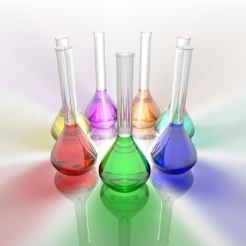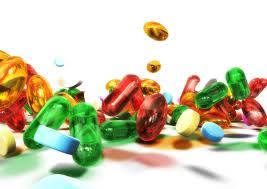Iodophor 20
Product Details:
- Structural Formula NA
- Solubility Na
- Molecular Formula NA
- Loss on Drying NA
- Particle Size 250 microns or less
- Smell Other
- Heavy Metal (%) NA
- Click to View more
Iodophor 20 Price And Quantity
- 600.00 - 650.00 INR/Kilograms
- 625 INR/Kilograms
- 25 Kilograms
Iodophor 20 Product Specifications
- Medicine Grade
- 39392-86
- Other
- Dark Blue to Black
- Na
- NA
- NA
- NA
- Other
- NA
- 250 microns or less
- Iodophor
- Iodophor
- upto ph 7
- 60 Months
- Liquid
- Odorless
- 99%
- 3808.9400
- NA
- Iodophor is an iodine containing solution with a solubilizing agent such as a surfactant or providone. Iodophor is widely used in the brewing and dairy industries as a sanitizer. The iodine is usually complexed with a high molecular weight carrier typically a polymer. One of the most widely used iodophors is povidone-iodine, which is often used for the disinfection of surfaces in breweries and dairy industries.
- NA
- Room Temperature
Iodophor 20 Trade Information
- Mumbai
- Letter of Credit at Sight (Sight L/C) Letter of Credit (L/C) Telegraphic Transfer (T/T) Days after Acceptance (DA) Cash Advance (CA)
- 25 Kilograms Per Day
- 7 Days
- Yes
- Free samples are available
- drum packing
- Western Europe Australia Eastern Europe Middle East Africa Central America South America Asia North America
- All India
- GMP / ISO
Product Description
Iodophor 20 manufactured to highest purity is packaged in diverse packaging options. Iodophor consists of iodine in a solution containing a solubilizing agent such as a surfactant. The brewing and dairy industries use iodophor as a sanitizer. Typically, the iodine is complexed with a polymer of high molecular weight.
Technical Specifications:
- CAS No: 39392-86-4
- Synonyms: Iodophors
- Appearance: Brown
- pH: <2
- Physical State: Liquid
How does it work:
It interferes with DNA synthesis when it penetrates cell walls and membranes of microorganisms. Additionally, iodophors bind to proteins and inactivate them. In breweries and dairy industries, povidone-iodine is one of the most commonly used iodophors for disinfecting surfaces.
Applications Or where it is used:
Iodophors perform best in an acidic medium, but are also effective up to pH 7. As pH rises above 4 and temperature rises above 50 deg C, iodine is gradually inactivated by proteins. IODOPHOR disinfects, cleans, and sanitizes. Antibacterial, antiviral, antifungal and antibacterial properties of IODOPHOR are well known.
USES: Laboratories, clinics, breweries, dairy and food industries, poultry & cattle farms, cold storage, hotels, restaurants, animal cages, etc. Diluted iodophor is often used to sanitize brewing and winemaking equipment and bottles. The dairy industry uses diluted iodophor extensively.
Manufacturing process :
The preparation of iodophors occurs by mixing iodine with the solubilizing agent; a heating method can increase the rate of the reaction. There are pharmaceutical preparations of iodophor that provide effective and predictable microbicidal activity that are complex-bound with free iodine. An iodophor preparation is adjusted for iodine content and stabilized to provide a level of free iodine to meet the desired killing level by adding an oxidizing agent.
How to use :
Diluted iodophor is often used to sanitize brewing as well as winemaking equipment and bottles. As a result, when used in the proper proportions, it does not need to be rinsed. Leaving it in contact with plastic or equipment can leave it stained with an unattractive orange-brown stain.
The solution is often supplied in different concentrations and diluted further with water before use. Dilution ratios are normally stated on the label, such as 1: 1000 or 1: 100. Clean the sanitization equipment thoroughly and allow it to sit in the solution for at least 2 minutes.
Dairy producers extensively use iodophor diluted with water.
Side effects :
There are also disadvantages to liquid sanitizers.
Most are heat unstable and are corrosive to skin and metal. In order for liquid sanitizers to work effectively, they should have a pH range of 6.5 to 9.5.

Price:
- 50
- 100
- 200
- 250
- 500
- 1000+










 : nilesh.sheth70
: nilesh.sheth70
